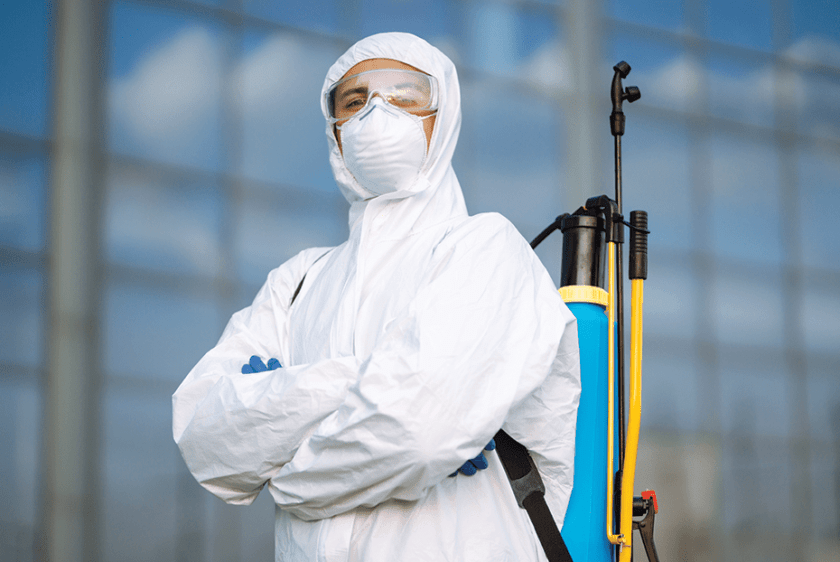Get professional Pest Control for your home and ensure safety.
Wiki Article
Eco-Friendly Bug Control Approaches for Managing Wildlife in Urban Areas
Urban locations often find themselves at the crossway of human task and wild animals, leading to one-of-a-kind obstacles in pest management. Green approaches stress lasting coexistence, employing techniques such as habitat adjustment and natural repellents to reduce human-wildlife disputes. These methods not just secure the setting yet also enhance community engagement in wildlife administration. As metropolitan populaces remain to expand, understanding the dynamics of wildlife communications comes to be increasingly important. What ingenious approaches can be applied to ensure both ecological balance and metropolitan security? Exploring this question exposes a compelling landscape of potential services.Understanding Urban Wild Animals Characteristics
Comprehending Urban Wildlife Characteristics is vital for developing efficient and environment-friendly insect control techniques. Urban locations are progressively coming to be habitats for numerous wild animals types, driven by factors such as environment fragmentation, food availability, and human infringement. Recognizing these characteristics enables a nuanced technique to pest management that lines up with ecological principles.Urban wild animals typically consists of species such as raccoons, squirrels, and birds, which adjust to city environments, discovering niches in eco-friendly rooms, parks, and even property areas. Their existence can bring about conflicts with people, specifically when they exploit personnels for food and sanctuary. Understanding the behaviors and environmental duties of these species informs techniques that minimize unfavorable communications while advertising biodiversity.
Furthermore, acknowledging the interdependencies within metropolitan ecological communities helps in determining essential areas for habitat preservation and restoration. This knowledge adds to the growth of integrated insect administration (IPM) methods that think about the ecological balance, thus lowering dependence on unsafe chemicals. By fostering conjunction in between human beings and city wild animals, cities can develop much healthier settings that benefit both locals and neighborhood ecosystems, paving the way for sustainable city living.
All-natural Repellents and Deterrents
All-natural repellents and deterrents supply a lasting option to traditional bug control techniques by utilizing the power of nature to keep unwanted varieties away. These green remedies commonly make use of plant-based active ingredients, necessary oils, and various other naturally happening materials that hinder bugs without hurting the environment.One reliable natural repellent is peppermint oil, which is recognized to drive away rats and bugs. Its strong aroma is undesirable to numerous pests, making it a preferred option for urban setups. Likewise, vinegar and citrus peels can serve as deterrents, as their solid odors are typically uninviting to different wildlife.
In addition, diatomaceous earth is an all-natural powder that can be spread in locations susceptible to pest activity, effectively drying out and deterring bugs without positioning threats to non-target types. In addition, garlic sprays and neem oil are acknowledged for their capacity to repel a large range of bugs, including both bugs and bigger wildlife.
Carrying out these natural repellents not only lowers reliance on chemical pesticides however likewise promotes a healthier city ecosystem, promoting an extra well balanced coexistence between people and wild animals. By utilizing these methods, urban locations can effectively manage pest populations while reducing ecological impact.
Habitat Modification Methods
Reliable environment modification methods play a vital duty in lasting pest management by altering the atmosphere to make it less favorable to pest invasions. By understanding the eco-friendly characteristics of city locations, homeowner can apply calculated adjustments that deter insects while promoting biodiversity.(Lawn pest control Port Charlotte)One key strategy includes preserving correct hygiene. This consists of regular waste removal, protecting garbage containers, and eliminating standing water to decrease reproducing websites for pests and rats. Additionally, landscaping methods such as choosing indigenous plants can boost eco-friendly balance, supplying environments for beneficial organisms while reducing resources for bugs.
An additional crucial technique is to seal entry points in structures. Checking and repairing cracks in structures, wall surfaces, and windows can considerably reduce parasite access. In addition, producing physical barriers, such as fences or plant barriers, can prevent wildlife activity right into human-inhabited areas.
Integrated Bug Administration Practices
Building upon environment modification techniques, integrated bug monitoring (IPM) methods provide a holistic technique to controlling parasite populations while decreasing ecological impact. IPM combines different strategies, consisting of biological, cultural, mechanical, and chemical controls, to achieve reliable insect monitoring.Biological control entails the introduction of natural predators or bloodsuckers to lower insect populations. Social methods, such as crop rotation and sanitation, interrupt pest life cycles and reduce their habitats - Pest control service. Mechanical controls, like catches and barriers, give immediate remedy for insect stress without chemical intervention
Chemical controls are made use of as a last hotel, concentrating on targeted applications that restrict harm to non-target types and the setting. The option of eco pleasant chemicals, when needed, is essential to the IPM structure. In addition, keeping track of bug populaces and assessing potential damage assists educate decision-making, ensuring that interventions are timely and effective.
Neighborhood Participation and Education And Learning

(Pest inspection Port Charlotte)Workshops and educational sessions can gear up residents with understanding regarding indigenous varieties, environment conservation, and reliable safe insect monitoring techniques. Collaboration with colleges, neighborhood organizations, and federal government firms additionally boosts instructional outreach, ensuring that crucial information reaches diverse audiences.
Furthermore, community-led campaigns, such as area clean-up days and environment restoration projects, not only promote biodiversity but likewise enhance area connections. Pest control service. By urging citizens to share their experiences and monitorings, areas can establish targeted methods that attend to certain local parasite concerns
click to find out more Including responses from homeowners right into bug administration plans allows a more responsive and flexible technique to wildlife obstacles. Eventually, informed and engaged areas are vital to accomplishing long-term success in eco-friendly pest control, leading to much healthier city settings that value both human and environmental demands.

Conclusion
In verdict, eco-friendly pest control comes close to offer sustainable solutions for managing metropolitan wildlife. By prioritizing habitat modification, utilizing all-natural repellents, and applying incorporated pest management practices, areas can cultivate a harmonious conjunction with neighborhood animals.Report this wiki page